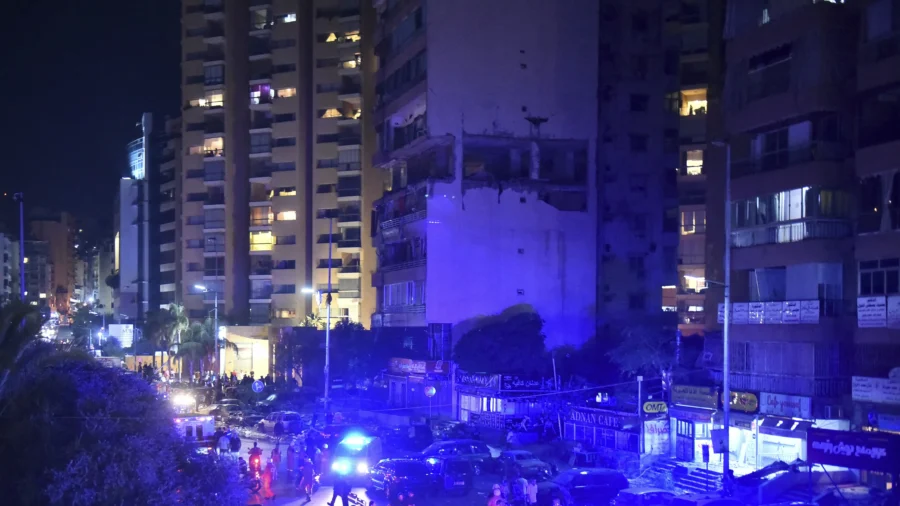Hamas and another terrorist group that call themselves the Popular Front for the Liberation of Palestine (PFLP) said on Monday that their respective leaders in Lebanon were targeted and killed in separate Israeli air strikes.
Hamas released a statement on the death of the Islamist group’s leader in Lebanon, Fateh Sherif Abu el-Amin (also Fateh Sharif Abu al-Amine), who the terrorist group said was killed, alongside his wife, son, and daughter, by a strike that targeted their house in the Palestinian refugee camp of el-Buss (also Al-Bass) in the southern seaside city of Tyre (also known as Sour). The strike happened in the early hours of Monday.
According to reporters with Beurit-based L’Orient Today, el-Amin was president of the United Nations Relief and Works Agency for Palestine Refugees Teachers’ Union.
Then, in additional 1 a.m. strikes on Beirut’s southern Kola district, the Marxist-Leninist terrorist group PFLP released a statement saying that three of its leaders had been killed by Israeli strikes. The attack in Kola appears to be Israel’s first strike within Beirut’s city limits.
Lebanon’s Health Ministry has said more than 1,000 Lebanese have been killed and 6,000 wounded in the past two weeks, without saying how many were civilians. The government said a million people—a fifth of the population—have fled their homes. Israel has said it gives civilians advanced warnings, asking for their cooperation to evacuate areas ahead of their strikes.
Syrian residents in the area said they had been sleeping under a bridge in the neighborhood for days after fleeing Israel’s bombardments.
The Israel Defense Forces (IDF) also said in a statement around 1 a.m. that it was “currently striking terror targets belonging to the Hezbollah terrorist organization in the area of Beqaa in Lebanon. Details to follow.”
The sites were the Hezbollah locations for rocket launchers and weapons storage, the army said.
The intensifying Israeli bombardment over two weeks has killed a string of top Hezbollah leaders, including its leader Sayyed Hassan Nasrallah.
Israel has vowed to keep up its operations to remove the Hezbollah threat to its territories, as incursions into northern Israel have been occurring almost daily.
On Sunday, the IDF announced it had taken out another senior Hezbollah member, Nabil Qaouk who commanded Hezbollah’s Preventative Security Unit and was a member of its executive council, in charge of the organization’s economic and social operations.
The IDF also conducted strikes on Houthi targets in Yemen following the terror group’s attacks on central Israel with ballistic missiles, which so far have been successfully intercepted by Israel’s aerial defense systems.
A suspicious aerial object was intercepted over the Upper Galilee early Monday morning, and a UAV in Israel’s economic waters in the north was intercepted by the IDF around 9 a.m. on Monday morning.
Israel has said its goals are to secure its northern areas for the safe return of residents who have been forced to flee Hezbollah rocket attacks, which are in violation of the existing 2006 U.N. Security Council Resolution 1701, which outlines a demilitarized zone between the Blue Line to Lebanon’s Litani River that runs from Tyre to the Beqaa Valley in the east.
Iran-backed Hezbollah has most of its operations in southern Lebanon or Beirut’s southern suburbs.
The IDF also said that it had hit a Hamas target in northern Gaza at the Abu Ja’far Al Mansour school that was turned into a Hamas command center to be used by terrorists against IDF troops.
“This is a further example of the Hamas terrorist organization’s systematic abuse of civilian infrastructure in violation of international law,” the IDF said.
Reuters contributed to this report.
From The Epoch Times

